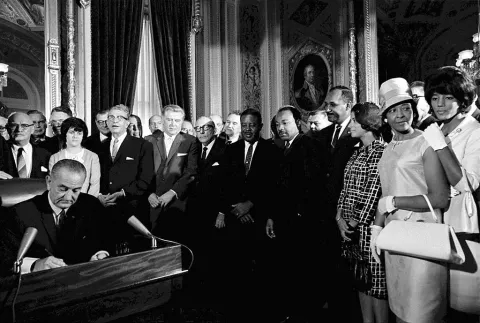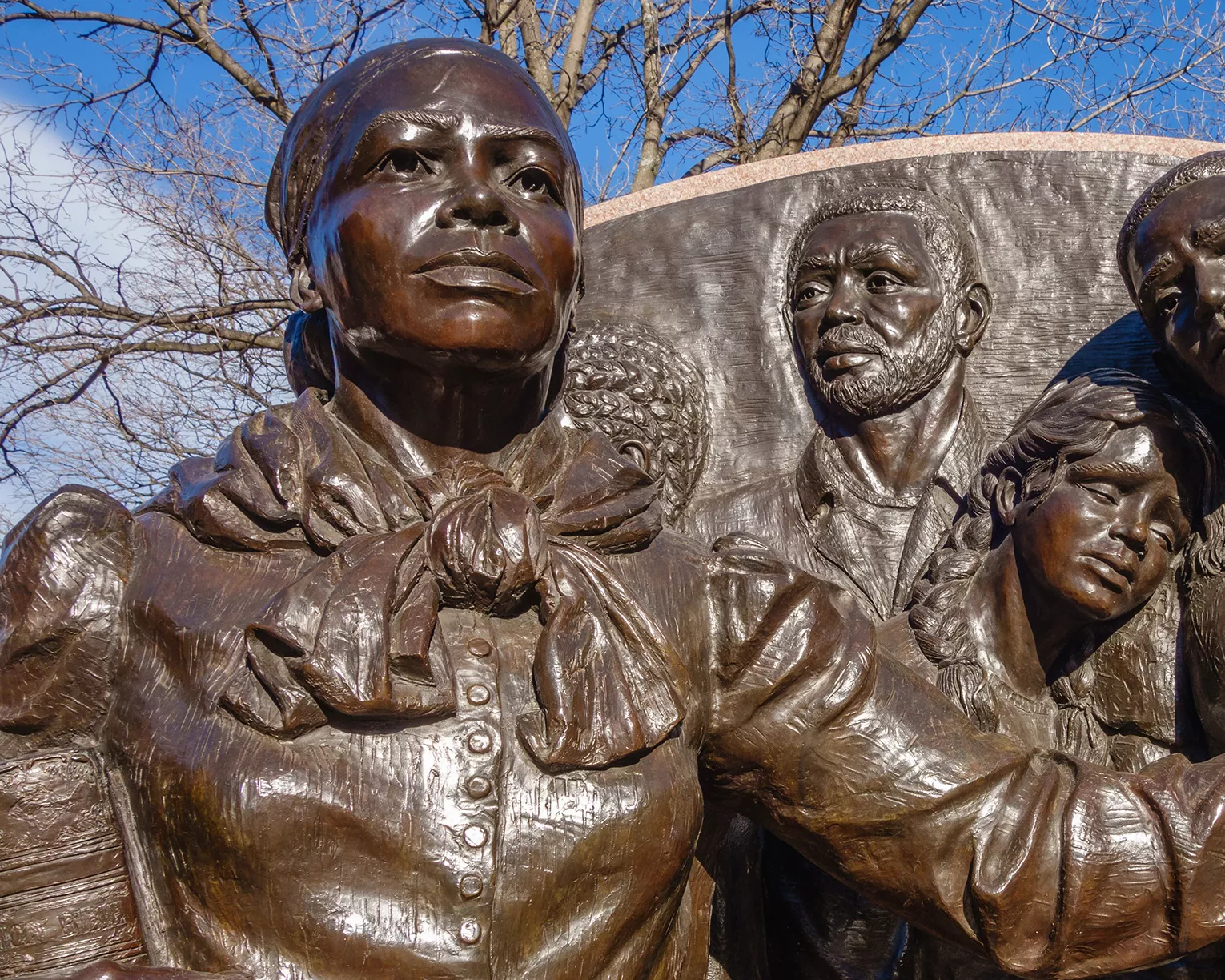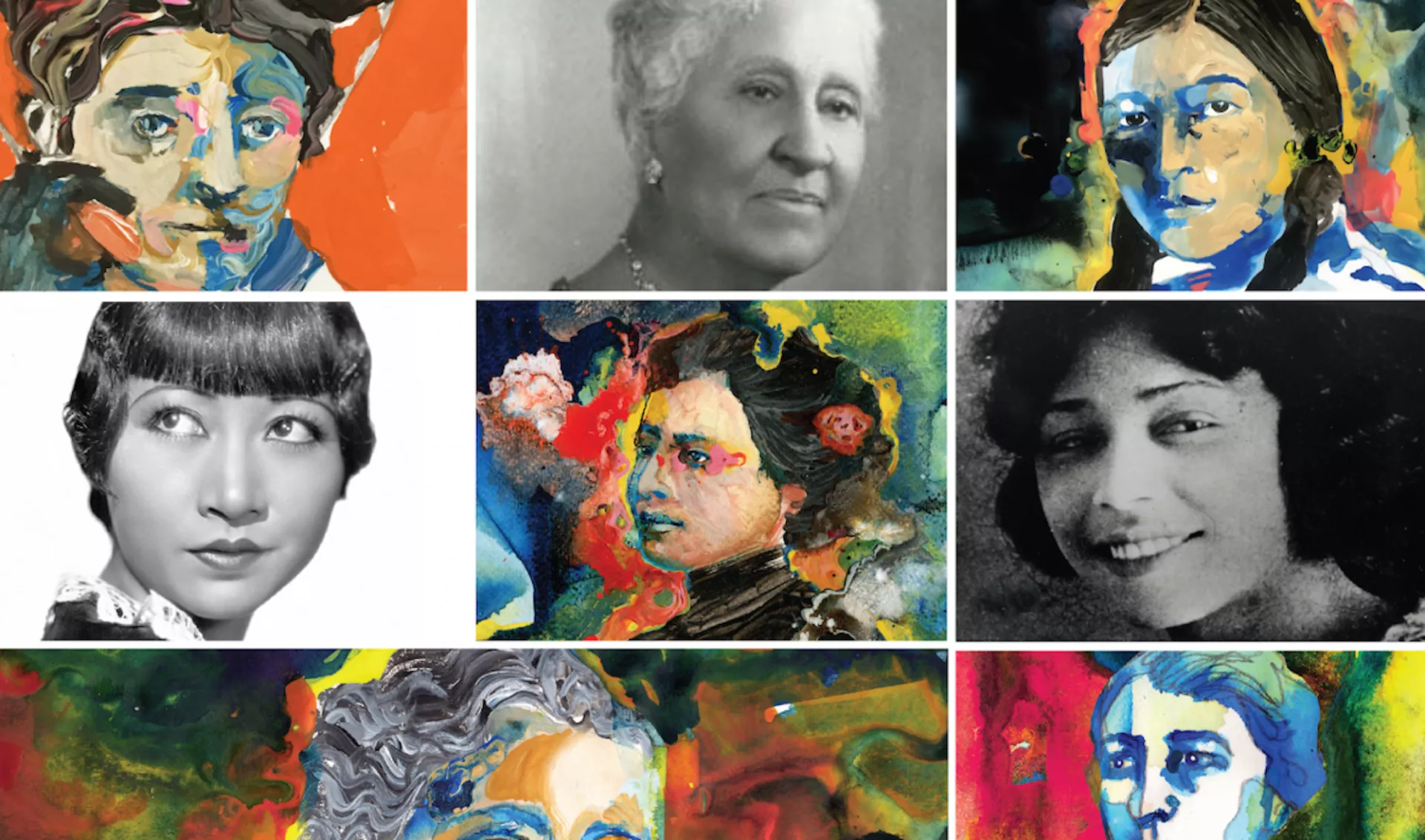Key Takeaways
- The contributions of women - particularly women of color - in U.S. politics, culture, and other segments of society are often muted, intentionally misattributed, and erased from mainstream narratives by those who have upheld white supremacy culture.
- Two filmmakers, in partnership with PBS LearningMedia, are hosting a virtual summit on Sat., February 13 to examine why women have such limited presence in historical narratives and the series of 26 short films about trailblazing and little-known American women and curriculum designed for in-class and remote learning.
- Educators will receive professional development credit for their attendance to the summit and will get a free women’s history resource guide as a takeaway.
When Lyndon B. Johnson signed the Voting Rights Act of 1965, historic photos show the 36th president flanked by mostly men, including Martin Luther King, Jr. and Clarence Mitchell Jr., a civil rights activist and lobbyist for the NAACP. Both men are easy to recognize. Also in that photo are three Black women who are not easily recognizable.
This lack of recognition has been a long-standing pattern for countless of women—especially women of color—who have deeply influenced U.S. politics, culture, and other segments of society through the eras. Their stories are often muted, intentionally misattributed, and erased from mainstream narratives by those who have upheld white supremacy culture.
“In some ways, it's on us to read more critically the sources we already find in our textbooks [and] lesson plans, and interrogate them with women in mind,” says Martha S. Jones, a professor of history at Johns Hopkins University and the author of "Vanguard: How Black Women Broke Barriers, Won the Vote, and Insisted on Equality for All."
If women are missing from storylines, find out where they are and what they’re doing at the time. You’ll find, says Jones, who quotes her colleague Mary Ryan at Hopkins, ‘Women are everywhere.’”
As for the three Black women in the photo, they are Patricia Roberts Harris, Zephyr Wright, and Vivian Malone Jones. Martha S. Jones explains that they “turn out to be fascinating and tell a whole other story” of how their work helped to shape the civil rights era.
A Complete Picture
In addition to finding out where the women are in U.S. history, it’s equally important to tell a complete story.
“Oftentimes, we encounter them in textbooks as sound bites, and we don't have to settle for that,” explains Jones. “We can we pick up the women who already appear and teach ourselves enough about them as educators, so they become the vehicles for new kinds of lessons.”

Take Rosa Parks, known for refusing to give up her seat to a White passenger on a bus in Montgomery, Ala., in 1955. Her story, however, begins long before that important day. It starts with her wanting to register to vote in the 1940s and who then joins the Montgomery NAACP to support their efforts to help Black citizens get the right to vote.
According to a recent Time article, Parks tried to register three times herself. She was refused the first time and prevented by a questionnaire—designed to keep Black citizens from voting— the second time. “Finally, on her third try in 1945, convinced she had answered the questions correctly, Parks copies down her questions and answers to have on hand for future legal challenges, and registrar saw her do that and approved her application,” writes Time writer Olivia B. Waxman.
“I don't think history is a blueprint [or] a road map that we can import from the past and then use it to divine how to go forward,” says historian Martha S. Jones. “I do think history includes cautionary tales… lessons about choices made, paths taken… that can be instructive as we work to build that more perfect union.”
‘Where Are the Women?’
Jones will be among a group of featured keynote speakers at an upcoming event called, “Where Are the Women?,” a two-hour virtual summit that will address why women are vastly underrepresented in U.S. history and social studies classrooms.
The summit is being convened by Unladylike2020 Executive Producers Sandra Rattley and Charlotte Mangin, in partnership with PBS LearningMedia, and will feature racially diverse and little-known American women from the turn of the 20th century, and those who followed, through a series of 26 short films and a one-hour documentary.
The series was created by the two filmmakers after reading a research report that analyzed K – 12 social studies standards for the 50 states and Washington, D.C.
Statistics from the report were dismal: Out of 737 historical figures taught in the standard curriculum, just 178 (24%) are women, including several fictional characters. Ninety-eight of the women appear in only 1 state standard; and only 15 are taught in more than 10 states.
To reverse this trend and include the accomplishments of trailblazing women in history books used to teach social studies classes, the series elevates women such as Charlotta Spears Bass (1888-1969), a newspaper editor, civil rights crusader, and the first African American woman vice presidential candidate; Gladys Bentley (1876-1938), a gender-bending Harlem Renaissance performer and musician; and Zitkála-Šá/Gertrude Simmons Bonnin (1876-1938), a composer, author, and indigenous rights activist.
As part of the event, lesson plans and curriculum that represent the accomplishments of women in history, and are tailor-made for virtual, in-person, and hybrid learning, will be shared—resources that would be great way to prepare for Women's History Month.
Mangin says that the goal of the Unladylike2020 series is to “expand how history is taught and understood across the country. We hope this summit will help activate significant educational change and provide long-overdue recognition of women’s contributions to U.S. history.”
The summit will stream live on the American Masters YouTube channel on Sat., February 13, 2021, from 1pm-3pm EST, 12pm-2pm CST, 11am-1pm MST, and 10am-12pm PST.
RSVP here: bit.ly/WATWSummit.
Educators will receive a two-hour professional development credit for their attendance, and all participants will get a free women’s history resource guide as a takeaway.



